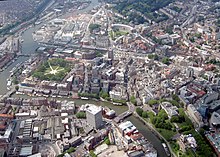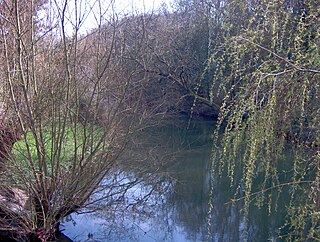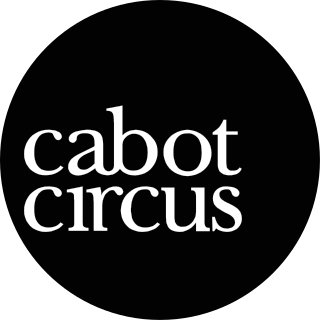
The English city of Bristol has a number of parks and public open spaces.

The English city of Bristol has a number of parks and public open spaces.

Bristol City Council own or manage four major parks: The Downs, Blaise Castle, Ashton Court and Stoke Park.
The Downs lie 2 miles (3 km) northwest of the city centre and totals 441 acres (1.78 km2). The Downs are divided into Clifton Down to the south and Durdham Down to the north, with a main road running between them. At the south end of Clifton Down is the Clifton Suspension Bridge, and both look over the Avon Gorge. The Downs are protected by an 1861 Act of Parliament, and are managed by the Downs Committee, a joint committee of the city council (which owns Durdham Down) and the Society of Merchant Venturers (which owns Clifton Down). [1]
Blaise Castle estate, situated 4 miles (6 km) north west of the city centre, includes a recreation ground and large playing fields, as well as woodland, a mansion, and a small gorge, totalling 650 acres (2.6 km2). The mansion house is now a branch of Bristol City Museum and Art Gallery. [2]
At 850 acres (3.4 km2) Ashton Court estate is Bristol's largest park. Though the estate lies largely within the boundaries of North Somerset it is maintained by Bristol City Council, and has been publicly owned since 1959. The park contains horse riding and mountain biking trails, and is protected as a Site of Special Scientific Interest for its ecology. The mansion house is now a conference centre. [3]
Stoke Park is Bristol's newest park, acquired by Bristol City Council in 2011 and occupying a prominent position alongside the M32 motorway.
The Centre Promenade is a paved, largely pedestrianised area built over the culverted River Frome. Known locally as the Centre, [4] many local bus services terminate here.
Castle Park is adjacent to the Broadmead and Cabot Circus shopping centres and the Floating Harbour. The park was created after wartime bombing damaged much of the pre-war shopping area which stood here. The ruined shells of two churches, St Peter and St Mary le Port, still stand in the park (with the aid of concrete reinforcements) and the foundations of Bristol Castle are also a feature. There are small formal gardens around St Peter's church, which is maintained as a war memorial. Bristol City Council has confirmed its intention to redevelop the area around St Mary-le-Port church. The project area includes a part of Castle Park to the west of St Peter's Church. [5]
To the west of the city centre lie Berkeley Square and Brandon Hill. At the summit of Brandon Hill, the Cabot Tower commemorates John Cabot, a pioneer who sailed in 1497 from Bristol to Newfoundland. Brandon Hill is steep and is divided into informal gardens, a small nature reserve and open grassland. The Avon Wildlife Trust headquarters are beside the park.
Surrounded with high wrought-iron railings to the northwest of Broadmead shopping centre, St James' Park is a small former churchyard divided by a sunken walkway which links Broadmead to St James' Church and Bristol bus station.
West of the city centre between Bristol Cathedral and the Council House is College Green, a popular meeting place for street sports enthusiasts. [6]
Queen Square is a large Georgian square south of the city centre. In 1936 the Square was bisected diagonally by Bristol's inner circuit road. Traffic has now been diverted, and the restored Square has received a number of awards including a Green Flag Award, [7] the Landscape Institution Landscape and Heritage Award. [8]
King Square (restored in 1993), Brunswick Square and Portland Square are also Georgian and lie to the north of the city centre.
Work commenced in 2014 to remodel The Bearpit, a sunken space within St James Barton roundabout long seen to be in need of improvement. [9] [10] These works include construction of street-level pedestrian crossings and new wider stairways leading down to the open space.


Parks in Bristol's suburbs include:

The M32 is a 4.42 miles (7.11 km) long motorway in South Gloucestershire and Bristol, England. It provides a link from the M4, a major motorway linking London and South Wales, to Bristol city centre and is maintained by National Highways, the national roads body.

Clifton Down is an area of public open space in Bristol, England, north of the village of Clifton. With its neighbour Durdham Down to the northeast, it constitutes the large area known as The Downs, much used for leisure including walking and team sports. Clifton Down is the part of the Downs south of Stoke Road.

Durdham Down is an area of public open space in Bristol, England. With its neighbour Clifton Down to the southwest, it constitutes a 400-acre (1.6 km2) area known as The Downs, much used for leisure including walking, jogging and team sports. Its exposed position makes it particularly suitable for kite flying. Durdham Down is the part of the Downs north of Stoke Road.

The Downs are an area of public open limestone downland in Bristol, England. They consist of Durdham Down to the north and east and Clifton Down to the south, separated by Stoke Road.

The Avon Gorge is a 1.5-mile (2.5-kilometre) long gorge on the River Avon in Bristol, England. The gorge runs south to north through a limestone ridge 1.5 miles (2.4 km) west of Bristol city centre, and about 3 miles (5 km) from the mouth of the river at Avonmouth. The gorge forms the boundary between the unitary authorities of North Somerset and Bristol, with the boundary running along the south bank. As Bristol was an important port, the gorge formed a defensive gateway to the city.

Bristol City Centre is the commercial, cultural and business centre of Bristol, England. It is the area north of the New Cut of the River Avon, bounded by Clifton Wood and Clifton to the north-west, Kingsdown and Cotham to the north, and St Pauls, Lawrence Hill and St Phillip's Marsh to the east. The Bristol Royal Infirmary, Bristol Royal Hospital for Children, the BBC, the main campus of the University of Bristol, the Crown and Magistrate's Courts, Temple Meads railway station, Bristol bus station, the Park Street, Broadmead and Cabot Circus shopping areas together with numerous music venues, theatres and restaurants are located in this area. The area consists of the council wards of Central, Hotwells & Harbourside, and part of Lawrence Hill.

The Frome, historically the Froom, is a river that rises in Dodington Park, South Gloucestershire and flows southwesterly through Bristol to join the river Avon. It is approximately 20 miles (32 km) long, and the mean flow at Frenchay is 60 cubic feet per second (1.7 m3/s). The name Frome is shared with several other rivers in South West England and means 'fair, fine, brisk'. The river is known locally in east Bristol as the Danny.

Knowle West is a neighbourhood in the south of Bristol, England, 2 miles (3 km) from the city centre, and mostly in the Filwood ward of Bristol City Council, although a small part of the estate lies within Knowle ward to the east. To the west are Bishopsworth and Hartcliffe, to the north Bedminster and Windmill Hill and to the south Whitchurch Park and Hengrove. In 2008, the population was 11,787.

Blaise Castle is a folly built in 1766 near Henbury in Bristol, England. The castle sits within the Blaise Castle Estate, which also includes Blaise Castle House, a Grade II* listed 18th-century mansion house. The folly castle is also Grade II* listed and ancillary buildings including the orangery and dairy also have listings. Along with Blaise Hamlet, a group of nine small cottages around a green built in 1811 for retired employees, and various subsidiary buildings, the parkland is listed Grade II* on the Register of Historic Parks and Gardens of special historic interest in England.

Bristol, the largest city in South West England, has an eclectic combination of architectural styles, ranging from the medieval to 20th century brutalism and beyond. During the mid-19th century, Bristol Byzantine, an architectural style unique to the city, was developed, and several examples have survived.

Cabot was a council ward that covered the centre of Bristol, England. It took its name from the Cabot Tower, a memorial tower on Brandon Hill that was built to commemorate John Cabot's voyage and "discovery" of North America. The ward was abolished in 2016.

Bristol Tramways operated in the city of Bristol, England from 1875, when the Bristol Tramways Company was formed by Sir George White, until 1941 when a Luftwaffe bomb destroyed the main power supply cables.

The A4018 is an A-road connecting the city centre of Bristol to the M5 motorway at Cribbs Causeway. It is one of the four principal roads which link central Bristol to the motorway network.

Castle Park is a public open space in Bristol, England, managed by Bristol City Council. It is bounded by the Floating Harbour and Castle Street to the south, Lower Castle Street to the east, and Broad Weir, Newgate and Wine Street to the north. Its western boundary is less obviously defined and has been the subject of controversy, perhaps because the area around High Street and St Mary le Port Church, though not part of the park and always intended for development, is often considered at the same time as the park.
The city of Bristol, England, is divided into many areas, which often overlap or have non-fixed borders. These include Parliamentary constituencies, council wards and unofficial neighbourhoods. There are no civil parishes in Bristol.

Brandon Hill, also known as St Brandon's Hill, is a hill close to Bristol city centre, between the districts of Clifton and Hotwells, in south west England.

Cabot Circus is a covered shopping centre in Bristol, England. It is adjacent to Broadmead, a shopping district in Bristol city centre. The Cabot Circus development area contains shops, offices, a hotel, 250 apartments and formerly, a cinema. It covers a total of 139,350 m2 (1,500,000 sq ft) floor space, of which 92,900 m2 (1,000,000 sq ft) is retail outlets and leisure facilities. It opened in September 2008, after a ten-year planning and building project costing £500 million.

The 2011 Bristol City Council elections were held on Thursday 5 May 2011, for 24 seats, that being one third of the total number of councillors. The Liberal Democrats, who had won overall control of the council in 2009 and increased their majority in 2010, experienced a drop in support and lost 5 seats; 4 to the Labour Party and 1 to the Green Party, which gained its second ever council seat in Bristol. This meant that the Lib Dems no longer had a majority on the council. However, they continued to run the council, relying on opposition groups to vote through any proposal.
The 2015 Bristol City Council election took place on 7 May 2015 to elect members of Bristol City Council in England. This was on the same day as other local elections.